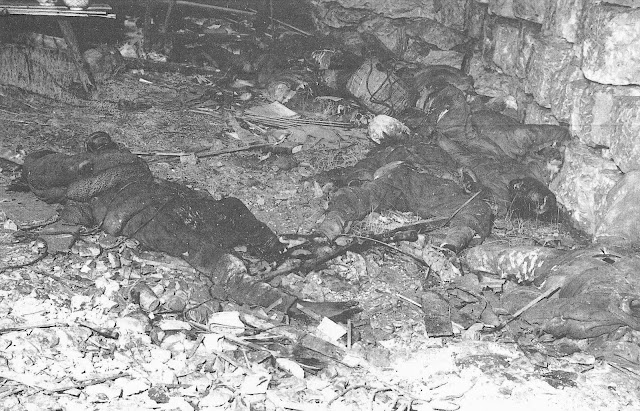On November 28, 1930, the remains of the mass suicide of the family of Hanaoka Ichiro and Hanaoka Jiro, police officers of Kirishima, a Japanese colony in Taiwan, were found in a corner of a mountain forest in what the Japanese police called “Hanaoka Mountain”. At the site of the Hanaoka family and their lady's suicide, Jiro Hanaoka, wearing a brocade wedding dress and a belt knife, hanged himself and his wife, Hatsuko, who was his wife. In the Hanaoka Mountain forest in Taiwan, eight men and 12 women of the Hanaoka family hanged themselves in a group; 17 hanged corpses were hung from a tree, three others committed ritual suicide under the tree, and the faces of the hanged men were wrapped in cloth.
Ichiro Hanaoka killed his wife Hanako, who was dressed in a bridal gown, and then committed suicide by ritual suicide. In the middle of the bodies of husband Ichiro Hanaoka and his wife Hanako was the body of their one-month-old son, Yukio. Due to the delay in discovery, the bodies of the Hanaoka family's mass suicide were already decomposing and were cremated and buried soon after. Before his death, Jiro Hanaoka left a suicide note at the Kirisha police station where he worked, explaining to the colonists on behalf of his Kirisha brethren that the clan had been forced to revolt due to overwork.
On October 27, 1930, some 300 grand chamberlains from six clans (villages), led by Mahebo-sha headman Mouna Rudao, a Sedek native of Wusha, a mountainous area in central Taiwan, rose up against the Japanese authorities and attacked the Wusha public school field day after attacking the stationing offices throughout Wusha. On October 30, the Japanese military command issued a decree to defeat the Japanese, and the attack was suppressed and turned into a battle, which ended on November 19. The number of natives was halved from 1,236 to 514, and the casualties included about 450 suicides. The victims were cruelly decapitated. Two Kirisha Sedek police officers, Ichiro Hanaoka and Jiro Hanaoka, were also on the local police force. After the incident, each of them committed suicide, leaving the following will, which expresses their sense of duty to Japan. Some believe the wills were forged, while others believe they masterminded, instigated, or guided the riot.
On November 28, 1930, the remains of the mass suicide of the families of Ichiro and Jiro Hanaoka, police officers of Kirishima, a Japanese colony in Taiwan, were discovered in a corner of a mountain forest in what the Japanese police called “Hanaoka Mountain. At the site of the Hanaoka family and their lady's suicide, Jiro Hanaoka, wearing a brocade wedding dress and a belt knife, hanged himself and his wife, Hatsuko, who was his wife. In the Hanaoka Mountain forest in Taiwan, eight men and 12 women of the Hanaoka family hanged themselves in a group; 17 hanged corpses were hung from a tree, three others committed ritual suicide under the tree, and the faces of the hanged men were wrapped in cloth.
Ichiro Hanaoka killed his wife Hanako, who was dressed in a bridal gown, and then committed suicide by harakiri. In the middle of the bodies of husband Ichiro Hanaoka and his wife Hanako was the body of their one-month-old son, Yukio. Due to the delay in discovery, the bodies of the Hanaoka family's mass suicide were already decomposing and were cremated and buried soon after. Before his death, Jiro Hanaoka left a suicide note at the Kirisha police station where he worked, explaining to the colonists, on behalf of his Kirisha brethren, that the clan had been forced to revolt due to overwork.
On October 27, 1930, some 300 grand chamberlains from six clans (villages), led by Mahebo-sha headman Mouna Rudao, a Sedek native of Wusha, a mountainous area in central Taiwan, rose up against the Japanese authorities and attacked the Wusha public school field day after attacking the stationing offices throughout Wusha. On October 30, the Japanese military command issued a decree to defeat the Japanese, and the attack was suppressed and turned into a battle, which ended on November 19. The number of natives was halved from 1,236 to 514, and the casualties included about 450 suicides. The victims were cruelly decapitated. Two Kirisha Sedek police officers, Ichiro Hanaoka and Jiro Hanaoka, were also on the local police force. After the incident, each of them committed suicide, leaving the following will, which expresses their sense of duty to Japan. Some believe the wills were forged, while others believe they masterminded, instigated, or guided the riot.



































